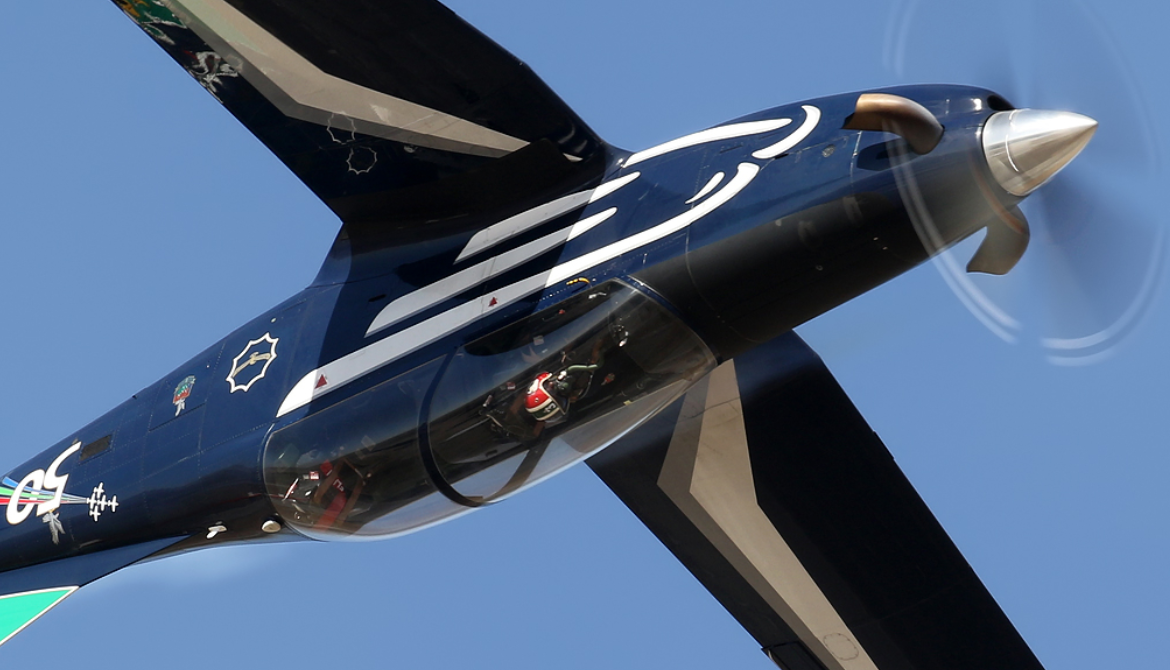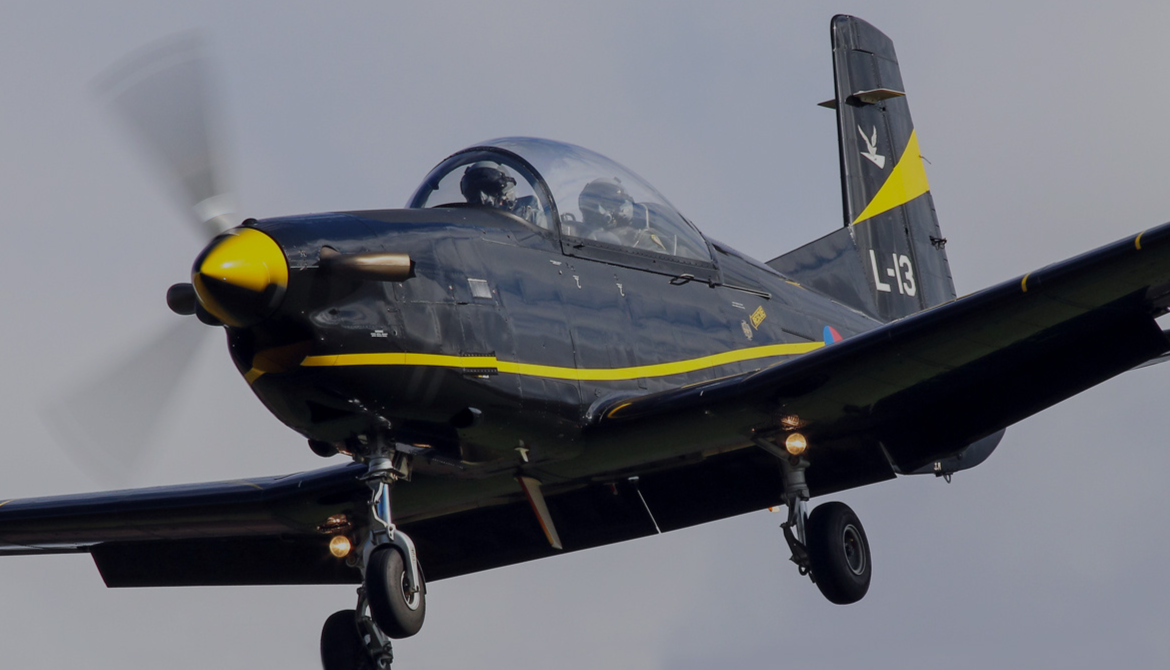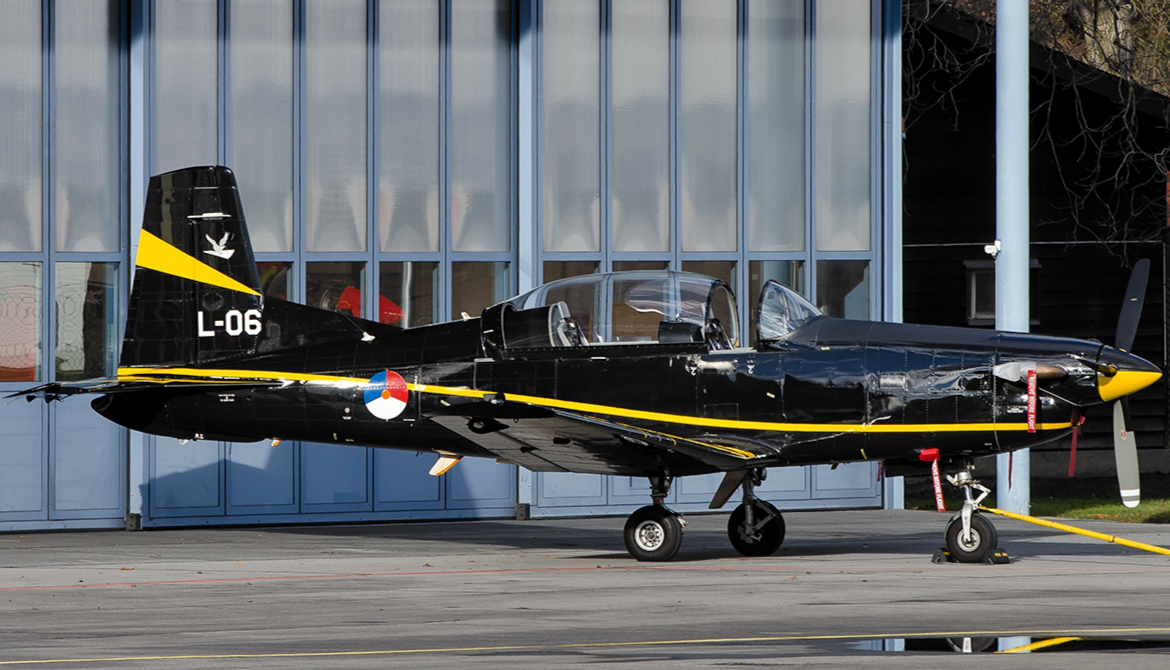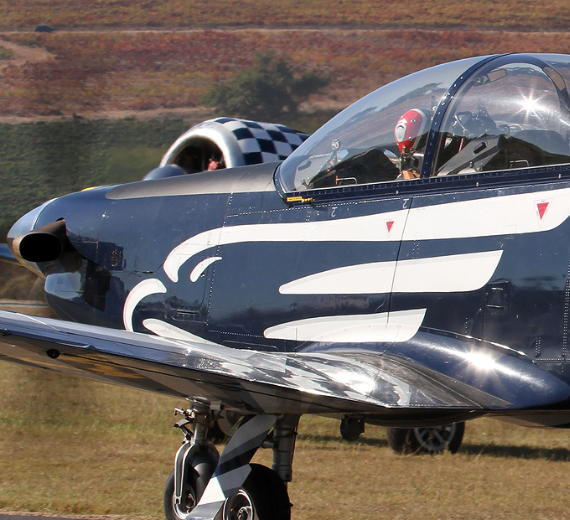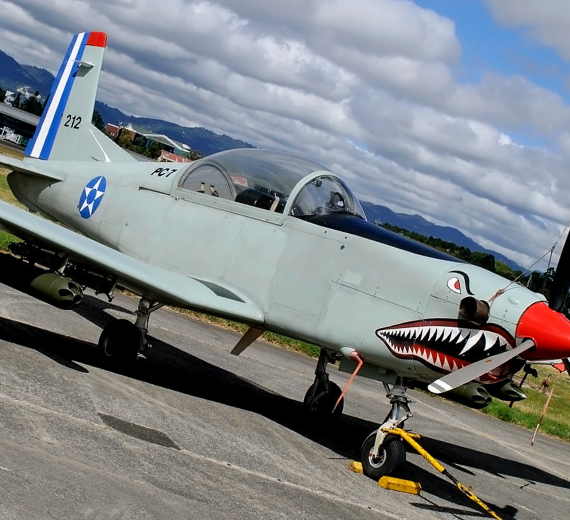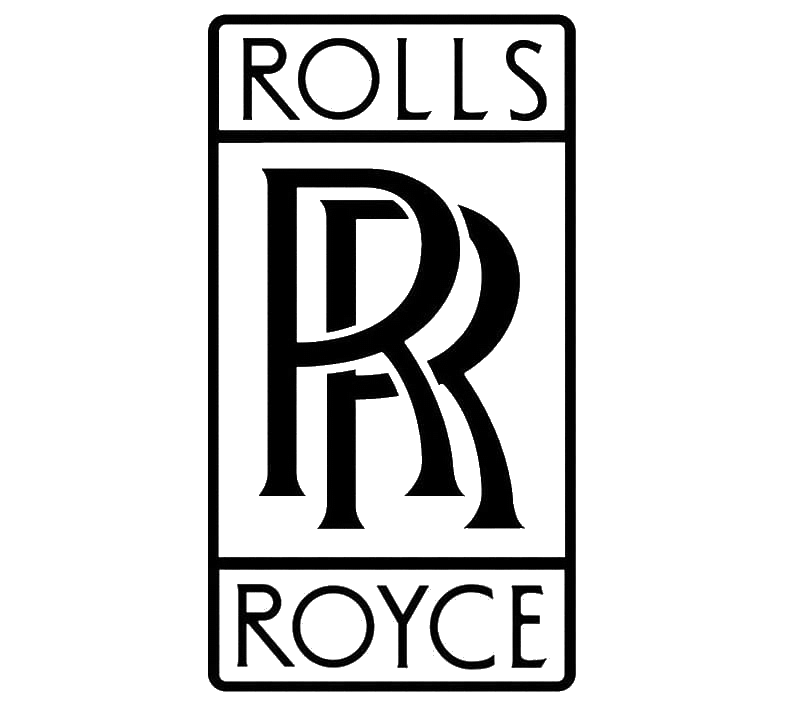Pilatus PC-7 Turbo Trainer
Role Trainer aircraft
Manufacturer Pilatus Aircraft
First flight PC-7:
12 April 1966; 57 years ago (prototype)18 August 1978; 45 years ago (production) PC-7 Mk.II M:
28
September 1992; 31 years ago
Introduction PC-7: 1978 PC-7 Mk.II M: 1994
Status In service
Primary users Mexican Air Force
Indian Air Force
South African Air Force
Royal Malaysian Air Force
Produced 1966–present
Number built >618
Developed from Pilatus P-3
Variants Pilatus PC-9
.
History Pilatus Aircraft Ltd
Pilatus PC-7 Turbo Trainer

The Pilatus PC-7 Turbo Trainer is a low-wing tandem-seat training aircraft, designed and manufactured in Switzerland by Pilatus Aircraft. The aircraft is capable of all basic training functions, including aerobatics, instrument, tactical, and night flying.
The PC-7 was developed from the preceding piston-powered Pilatus P-3, largely differing by the adoption of a turboprop engine, a bubble canopy, and a new one-piece wing. Introduced during the 1970s, it has since developed a sizable presence of the global trainer market. The type has been adopted by in excess of twenty air forces as their ab initio trainer, as well as multiple civilian operators. Over one million hours have reportedly been flown by PC-7s worldwide. In addition to training operations, some aircraft are armed and have been used for combat missions by several customers, including Chad, Iran, and Mexico, often in violation of the relevant export agreement between the customer and the Swiss government. An improved model of the aircraft, the PC-7 Mk.II M, was developed during the 1990s, by combining the newer airframe and avionics from the PC-9 with the PC-7's smaller turbine engine. Reportedly, in excess of 600 PC-7s have been sold to various operators, the majority of which still being in service. In Pilatus' range of aircraft, the PC-7 has been succeeded by the newer PC-9 and PC-21 trainers
Work on what would become the PC-7 commenced during the 1960s. It was based on the earlier piston-powered Pilatus P-3, the initial prototype being produced from the existing prototype P-3, principally differing by the substitution of its Lycoming O-435 engine with a Pratt & Whitney PT6A-20 turboprop power-plant. On 12 April 1966; 57 years ago, the modified prototype performed its maiden flight. However, the PC-7 programme was abruptly shelved following an accident involving the aircraft. The termination of work was reportedly driven by a lack of market interest.0
KmCeiling
0
KmCombat RANGE
0
Km/hAircraft Speed
0
Max Crew
Photo Gallery
Pilatus Aircraft Ltd; Pilatus PC-7 Turbo Trainer


Pilatus Aircraft LtdPilatus PC-7 Turbo Trainer
General Info
-
-
- Crew: two, pilot instructor and student pilot
- Capacity: two
- Length: 9.78 m (32 ft 1 in)
- Wingspan: 10.40 m (34 ft 1 in)
- Height: 3.21 m (10 ft 6 in)
- Wing area: 16.60 m2
-
Powerplant
-
-
- Empty weight: 1,330 kg (2,932 lb)
- Max takeoff weight: 2,700 kg)
-
Fuel capacity: 474 L (104 imp gal; 125 US gal) usable internal fuel,
2x 240 L (53 imp gal; 63 US gal) external fuel drop tanks
• Max landing weight: 2,565 kg - Powerplant: 1 × Pratt & Whitney Canada PT6A-25A turboprop, 410 kW (550 hp)(derated from 485 kW (650 shp))
- Propellers: 3-bladed Hartzell HC-B3TN-2 / T10173C-8 constant-speed propeller, 2.36 m (7 ft 9 in) diameter
-
Performance
- Maximum speed: 412 km/h (256 mph, 222 kn) (max cruise at 6,095 m
- Cruise speed: 316 km/h (196 mph, (econ. cruise at 6,095 m
- Stall speed: 119 km/h (74 mph, 64 kn) (flaps and gear down, power off)
- Never exceed speed: 500 km/h (310 mph, 270 kn) EAS
- Range: 1,200 km (750 mi, 650 nmi) standard range without external drop tanks, ferry range with external drop tanks, (cruise power, at 5,000 m (16,000 ft) - 20 min reserves)
- Ferry range: 2,630 km (1,630 mi,
- Endurance: 4 hr 22 min
- Service ceiling: 10,060 m
- g limits: -3 / +6
Armament
- Hardpoints: 6 × underwing hardpoints for bombs and rockets with a capacity of 1,040 kg
.
Links to Youtube & Others
The PC-7 Mk.II M is a development of the PC-9's airframe and avionics, which was powered by the PC-7's smaller turbine engine, which reportedly achieved lower operating and maintenance costs
Pilatus
PC-7 Turbo Trainer
An Aermacchi MB-339 jet had just taken off in formation to head to Vercelli, where it should have perform an aerial exhibition.
Youtube Link
Learn all about the Aermacchi MB-339 with Curator of Aviation Eric Boehm.



